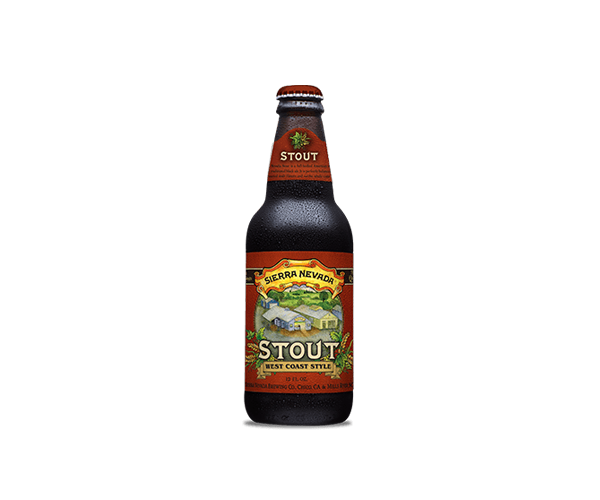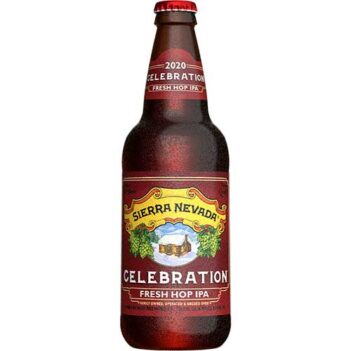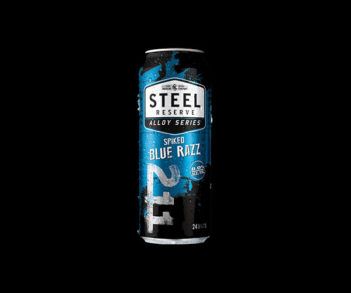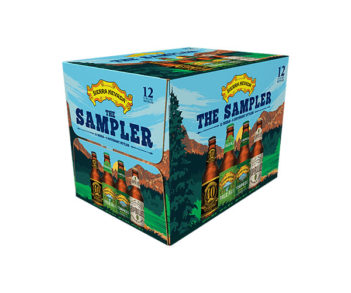Sierra Nevada Stout. Big, rich, and bold.
Before Sierra Nevada Stout was a reality, our founders brewed beer at home and dreamed of building a brewery one day. Back then, they brewed the beers they wanted to drink—bold and full of flavor. Stouts had always been a favorite, so when we needed a big and rich beer to test out the brewing system at our fledgling brewery, stout was the obvious choice. Thirty years later, not much has changed. We’re still brewing the beers we want to drink and our classic Sierra Nevada Stout is the same as it’s ever been—big, rich, bold, black as night and filled with the wild-eyed passion of which dreams are made.
OVERVIEW
ALCOHOL CONTENT 5.8% by volume
BEGINNING GRAVITY 15.4° plato
ENDING GRAVITY 5.0° plato
BITTERNESS UNITS 50
INGREDIENTS
YEAST Ale yeast
BITTERING HOPS Bravo
FINISHING HOPS Cascade, Yakima Golding
MALTS Two-row Pale, Munich, Caramel, Carafa, Black, Chocolate & Roasted Barley
FOOD PAIRING
CUISINE Mexican Mole, Oysters, Italian Salumi, Ginger Snaps
Brewing is as much art as science, and all beer specifications and raw materials are subject to change at our brewers’ creative discretion.
Stout versus Porter
While the exact origins of porter are hazy, the development of stout is more straightforward. By the 1700s, bolder, high-alcohol versions of any style of beer were referred to as “stout” or strong. By then, porter was far and away the most popular beer style in the British Isles, and clever breweries began advertising the stronger versions of their beers as “stout porter.” By the late 1800s, regular porters had fallen out of favor and stout porter, or simply stout, took their place. There are many different varieties of stout ranging from the light-bodied, low-alcohol Dry Irish Stout to the viscous, rich and strong Imperial Stout.
Specialty Malt
Malted barley generally falls into two camps: base malt and specialty malt. Base malt is highly modified malt that is responsible for producing the bulk of the fermentable sugars in the beer. Specialty malt is malt added for its flavor, color or effect on the body and mouthfeel of the finished beer. Specialty malts are typically produced by kilning and/or roasting barley. Caramel malt is made by placing germinated barley with a high moisture content directly into a roaster. The resulting malt produces unfermentable sugars during the mashing process, adding sweetness and body to finished beer. Roasted malt is base malt that has been placed in a roaster similar to a coffee roaster to produce deeper, darker, baker’s cocoa and espresso flavors like those common in a porter or a stout.
The American Style
Worldwide, Americans have something of an outsized reputation. Bold, brash and brazen. To some, that boldness is perceived as arrogance, but for us it’s just daring spirit and a thirst for adventure. The term “American” in brewing is not necessarily a sign of origin, but rather a brewing ethos and homage to that daring nature we love so much. In the early days of the craft brewing movement, there were far fewer beer styles and what was on record largely comprised the historical ales of the UK and the lagers of Germany. As American brewers began experimenting with homegrown ingredients and their own techniques, they inadvertently created beer so unique it defied conventional categories. Instead of a traditional pale ale, there all of a sudden was American pale ale—a new, rowdy hybrid of the older beer, intense with hop flavor and aroma. American-style beer is shorthand for the kind of brewing we do at Sierra Nevada—a reference to the use of a clean, crisp and neutral yeast, and a healthy dose of hops quite appropriate for the adventurer in us all.
Sierra Nevada Brewing Company Stout
Turns out, good beer can do a lot of good.
We shook things up in the ’80s, and it helped launch a beer revolution that’s in full force today. We keep pushing boundaries, whether that’s in the brewhouse, with sustainability, or in the great outdoors.
Our Story
Ken Grossman started Sierra Nevada with a hand-built brewhouse and the odds stacked against him. In 1980, that patchwork of pipes, pumps and tanks began making beers that forever changed the course of American craft brewing. Ken Grossman was a wild card from the get-go. As a toddler, he took things apart faster than his mom could keep up—the toaster, the washer, outlet covers. Tinkering turned into inventing, and learning in school didn’t compare to education in a backyard shop. Ken fell for science, though, thanks to the father of a close friend. Visiting their house, Ken always saw and smelled curious bubbling jugs: homebrew.
Sustainability
Use our interactive maps to explore how we slash our environmental impact at both breweries, from a next-level “reduce, reuse, recycle” mindset to generating alternative energy onsite.
Take Back Our Trails
We believe freedom is in the great outdoors. But trail maintenance is underfunded
while foot traffic keeps growing, and it’s harming our favorite places to play. If we don’t step up, our trails die out. Join us in action and advocacy to take back our trails.
sierranevada.com
facebook.com/sierranevadabeer
twitter.com/SierraNevada
youtube.com/user/SierraNevadaBrewing
instagram.com/sierranevada
untappd.com/SierraNevada
Sierra Nevada Brewing Co. events calendar:









